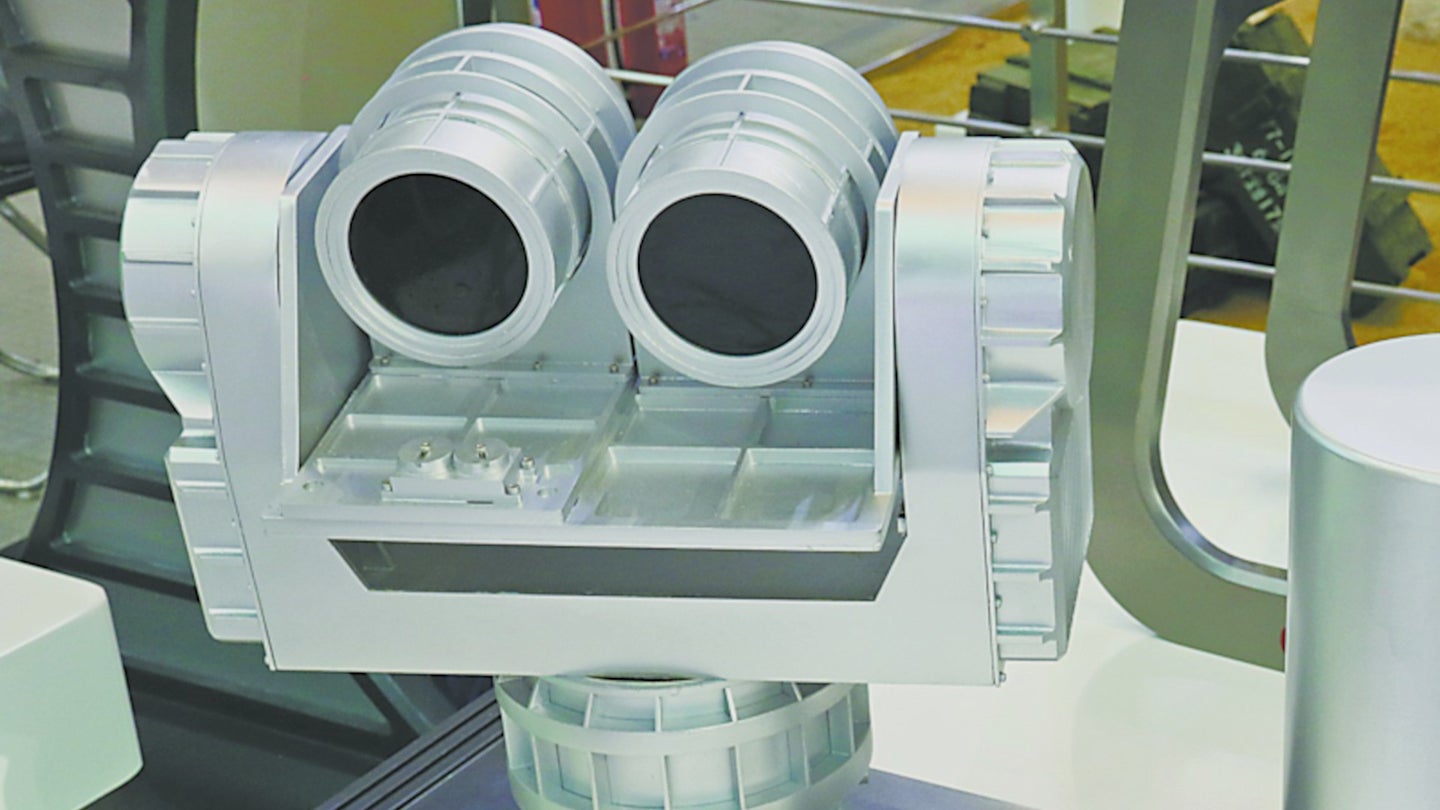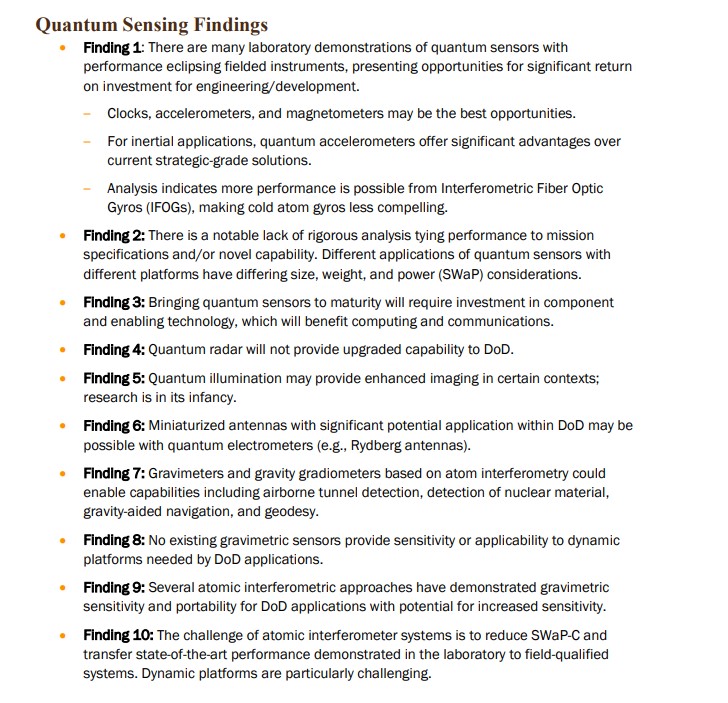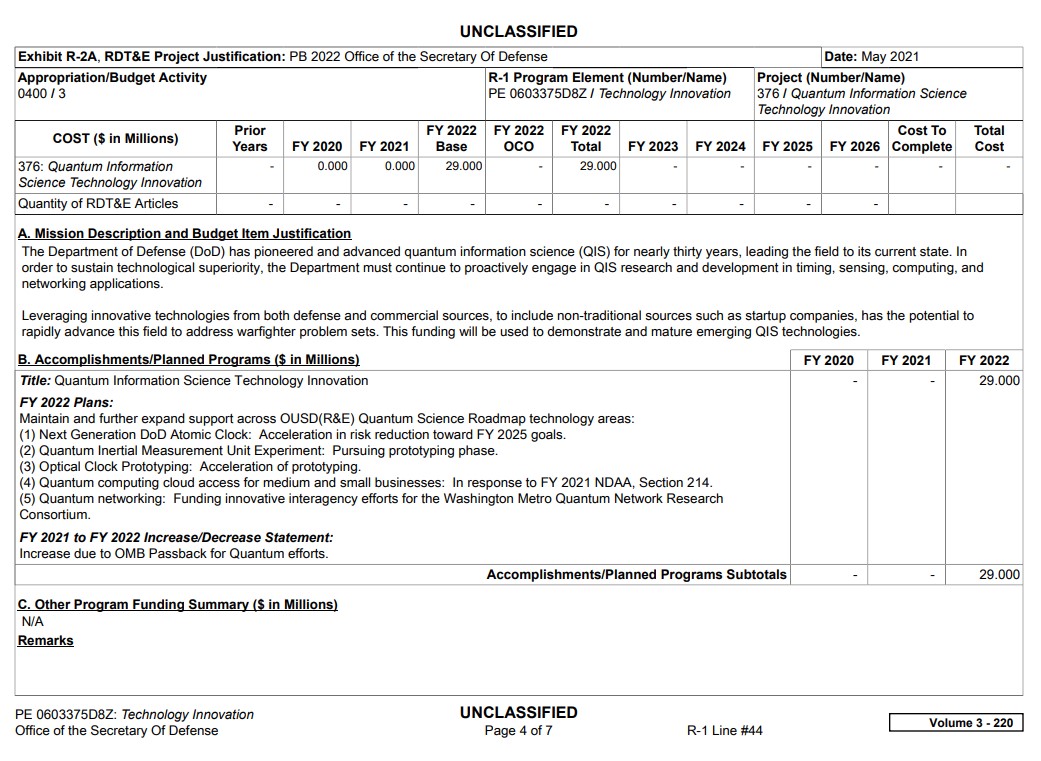One of the Department of Defense’s, or DOD’s, top independent scientific advisory boards has thrown cold water on the many recent predictions that quantum radar will enable new levels of detection far beyond that of traditional radar systems. Most damning, the Defense Science Board, or DSB, concluded that quantum radar technologies “will not provide upgraded capability to DOD.”
The DSB’s conclusions were cited in a report published in May by the Congressional Research Service (CRS). That report, titled “Defense Primer: Quantum Technology,” offers an overview of the quantum sciences research being conducted by the U.S. military. Besides the bad news for quantum radar research, the report notes applications of quantum sciences that still offer promise, include quantum sensing, quantum computers, and quantum communications.

In 2019, the DSB published an unclassified summary of its Limited Distribution report “Applications of Quantum Technology.” Craig Fields, the director of DSB, wrote in the summary that quantum technologies “exhibit remarkable potential to enhance or upend current warfighting capabilities” and that it is crucial for the DOD to “maintain the leading edge in understanding advances in these technologies.” Aside from concluding that quantum radar will not offer the U.S. military any upgraded sensing capabilities, the report reached many other conclusions about quantum sensing:

Quantum sciences define the way the physical universe works at the subatomic level. Essentially, it’s a way of describing how the particles that compose atoms work and interact with one another. Quantum radar differs from other radar systems, in theory at least, in that it uses entangled photons to detect objects rather than reflected radio waves. That is, quantum radar relies on a phenomenon called “quantum entanglement,” in which these subatomic particles are effectively linked together in pairs based on quantum properties. This appears to be true regardless of distance, which may allow for very fast interaction between entangled particles even if the distance between them is very large.
When a change occurs in one of the properties of an entangled particle, a corresponding change will occur in its paired mate. For example, if one particle in an entangled pair has an upward spin, the other must have a downward spin. Thus, the theory goes, when one of the entangled particles emitted by the quantum radar encounters an object, the other entangled particles should respond accordingly and instantly, allowing for much more precise and rapid detection of targets. If entangled particles emitted by a quantum radar strike an aircraft, for example, their entangled pairs should respond instantaneously.
In the video below, a scientist at the Dutch research institute TNO explains the basic principles behind quantum radar:

As with any emerging technology that has the potential to lead to revolutionary military applications, there are questions about adversaries’ capabilities when it comes to quantum technologies. The CRS report’s authors ask specifically “How mature are U.S. competitor efforts to develop military applications of quantum technologies?” and “To what extent, if at all, could such efforts threaten advanced U.S. military capabilities, such as submarines and stealth aircraft?”
Those questions have been a concern for some time, given several quantum radar-related announcements made over the last few years. MIT reported in 2019 that quantum radar had been demonstrated for the first time in Austria, but China made headlines prior to that in 2018 when it announced it had developed a quantum radar system that could detect even the most robust stealth platforms. Canada began funding a quantum radar project that same year. There were even earlier reports that China was pursuing the development of satellites based on similar concepts that were claimed to be able to render stealth obsolete. Similar claims are frequently made about new radar technologies, but so far, they’ve mostly been hyperbole.
While the recent DSB report may cast doubts on the future of quantum radar to bolster the United States military’s tracking and detection capabilities, there is still plenty of opportunity for the DOD to leverage the latest in quantum information sciences to improve other capabilities and systems. The Office of the Secretary of Defense does not offer an exact figure in its latest budget request for funding for all total quantum sciences research in the 2022 Fiscal Year, but the DSB’s report estimated that the Pentagon had allocated upwards of $688 million for quantum technologies and research in the current fiscal cycle.
In the Pentagon’s proposed Fiscal Year 2022 budget, the Office of the Secretary of Defense (OSD) asked for $29 million more for “Quantum Information Science Technology Innovation” through its Technology Innovation program element, although work on quantum radar is not among the plans listed.

In 2020, the U.S. Navy designated the Naval Research Laboratory as its Quantum Information Research Center, while the Air Force Research Laboratory has its own quantum sciences research initiatives. The Department of Energy is also investing heavily in quantum information sciences. The DSB has previously noted that the DOD’s interest in quantum technologies “far outweighs commercial interest” and that “the Department will need to be the key investor to bring these technologies to fieldable readiness levels,” and has suggested partnering with academia to advance its research.
The DSB found that quantum sensing, quantum computing, and quantum communications still hold promise, and these are all areas the OSD has outlined in its FY2022 budget request. Quantum sensing involves using properties of entanglement to develop sensors that are much more sensitive than traditional systems. Applications include more accurate Global Positioning System (GPS) systems; making more sensitive magnetic sensors for maritime surveillance; detecting underground structures and nuclear material; and more.
Quantum computing, meanwhile, could offer processing speeds exponentially higher than what are available today. Artificial intelligence and machine learning among the top priorities for quantum computing research, and the DSB recommended in 2019 that the DOD “must monitor and understand technological progress in quantum computing, both domestically and abroad, in order to rapidly take advantage of emerging advances.” As AI becomes more and more integrated into the DOD’s operations from front to back, quantum computing will obviously become a larger research priority.
Finally, quantum communications could one day leverage entanglement in order to create point-to-point encrypted communications that can be secured to the point of being nearly impervious to eavesdropping or cyberattacks. Last year, however, the DOD’s Undersecretary of Defense for Research and Engineering pointed out that all three of these research areas all still long-term prospects, and that the Department should remain realistic about its timelines.
Nevertheless, as recently as February of this year, the Office of the Undersecretary of Defense for Research and Engineering was boasting that its research into quantum sciences could allow for new levels of aircraft or missile tracking. Now that this report has claimed that quantum radar offers no enhanced capabilities, it may be that the DOD shifts its quantum sciences research priorities to other applications.
Contact the author: Brett@TheDrive.com
